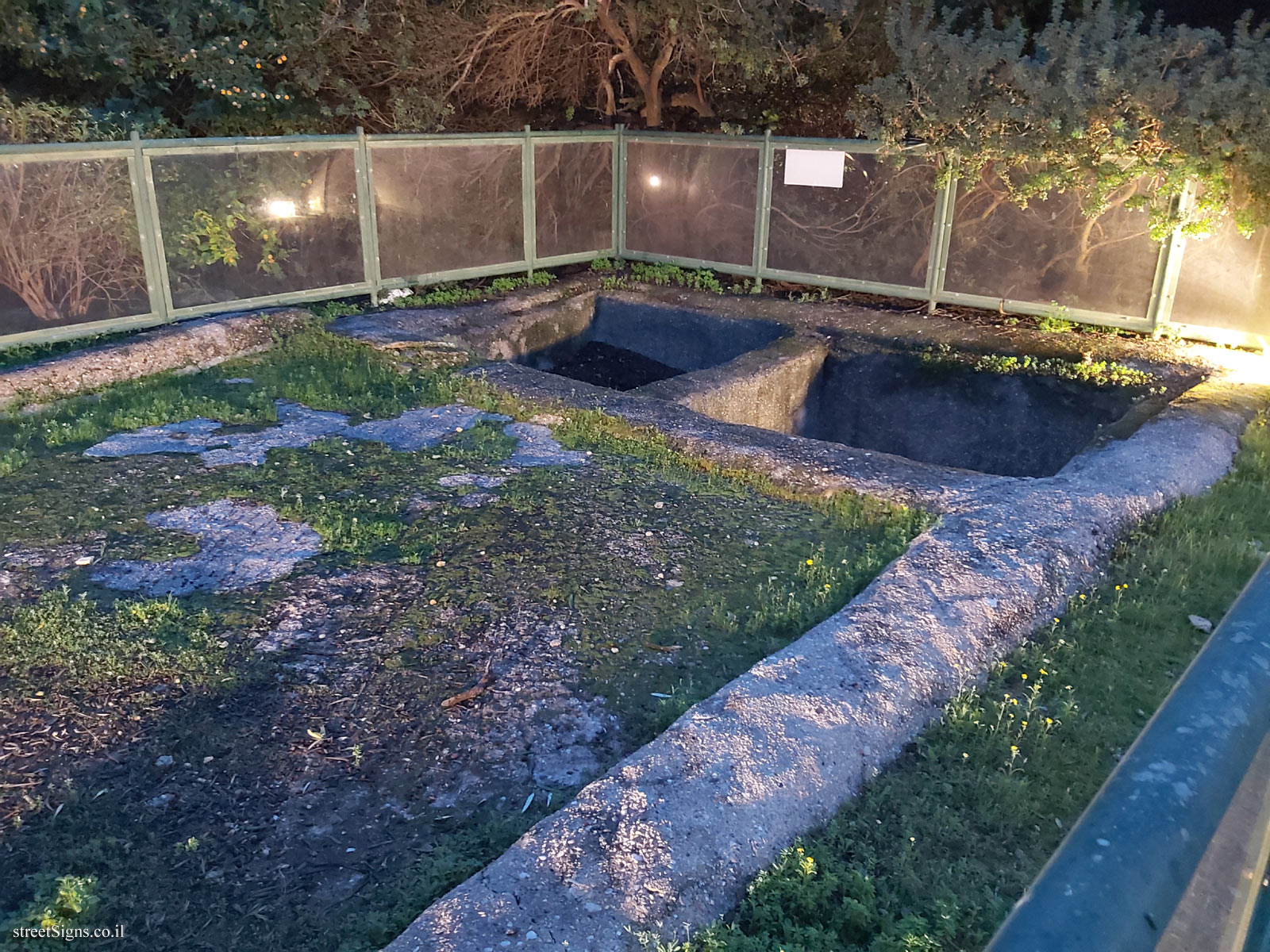The winepress was photographed that day
 Click for a larger image
Click for a larger image  Click for a larger image
Click for a larger image Other remains are scattered throughout the garden
 Click for a larger image Translation of the text on the sign
Click for a larger image Translation of the text on the sign:
Israel Antiquities Authority
Hellenistic winepress In archeological excavations conducted at this site in 1965 by Dr. J. Kaplan, on behalf of the Jaffa Museum - from the Eretz Israel Museum in Tel Aviv, uncovered a Hellenistic winepress (from the fourth to second centuries BCE).
The wineries discovered in this area are partly small wineries, defined as "private" wineries, and partly large and sophisticated wineries, in which large quantities of must were produced and used as "public" wineries.
The winepress at this site is in an elaborate winepress format with a "four-square" pattern that characterizes a "public" winepress with a square treading floor (1), parallel to it a filter cistern (2) and a square collecting pit (3), which together form a large fourth square surface.
Winepresses of this type were plaster-safe and / or paved with coarse white mosaic. And are mainly common in the center of the country from the Israel Valley in the north to Mount Hebron in the south.
(1) Treading floor where the must flowed via a plastered channel into an upper filter vat.
(2) The filter vat collected the residue which settled to the fioor.
(3) The collecting vat served for storage. sometimes another residue pit was located in the center of the floor.
Conservation, restoration and signage operations were carried out by the Israel Antiquities Authority and the Tel Aviv City Improvement Division
Learn about:

 Click for a larger image
Click for a larger image  Click for a larger image
Click for a larger image  Click for a larger image
Click for a larger image